- Administrator
- Albums and Singles
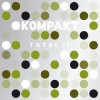 Nearly a decade has passed since Kompakt's Total 3—the zeitgeist-defining compilation that turned me, and scores of longtime fans, onto the Cologne label in its heyday—hit the shelves. Some things never change: the latest entry in the Total series is a reliable-as-always tour through the state of Kompakt circa 2011.
Nearly a decade has passed since Kompakt's Total 3—the zeitgeist-defining compilation that turned me, and scores of longtime fans, onto the Cologne label in its heyday—hit the shelves. Some things never change: the latest entry in the Total series is a reliable-as-always tour through the state of Kompakt circa 2011.
As with Total compilations past, Kompakt (and minimal techno) fans are likely to find Total 12 hit-or-miss to some degree. This time around, though, the ratio is much improved due to Kompakt's decision to scale back the collection to half its usual length—the first time it hasn't spanned two bloated CDs since Total 5. That means there are fewer tunes to chew on, but the quality control is much better. There is but one dud to my ears: Matias Aguayo's cloying "I Don't Smoke," in which two characters volley a pointless question back and forth over an unremarkable house track: "Rebolledo, do you have a cigarette?" ... "No, I don't smoke, I don't smoke." Good to know, guys.
Luckily, Aguayo's uncharacteristic flop is the outlier. The lion's share of Total 12 is solid, with highlights to be found at various turns. One of those is Belgian producer Kolombo's "Waiting For," which kicks off the compilation with a disco-influenced rhythm, accented by shimmery keyboards and a lyric which reads poorly on paper, but is secretly fit for New Order circa 1987: "Is this love worth waiting for / something special, something pure?" After a pair of remixes, Superpitcher's "White Lightning" ups the ante—as his first new material since his stellar 2010 LP, Kilimanjaro, it has more thrust and throb than anything on that full-length. Gui Boratto adds a thick, distorted slice of techno with "The Drill," far grittier than 2007's sublime Chromophobia, and an effective teaser for III, his upcoming full-length for Kompakt. There are two tracks from Kompakt figurehead Michael Mayer—one solo, one GusGus remix—and both are worth hearing.
There are a couple gems hidden deeper into the unsurprising 80-minute runtime, including a fantastic cut from the Modernist, Jörg Burger's alter ego of sorts. "Remodernist" boasts Total 12's most immediate, danceable hook; it is a fine contrast to Burger's classic '90s trance release with Mike Ink, Las Vegas. Elsewhere, parallels abound: Coma's "Playground Altona" is a near-Xerox of the shuffling rhythms and oscillations of LCD Soundsystem's "45:33"/"Someone Great," while Wolfgang Voigt's "Frieden" plays like a minimal techno update on the Durutti Column's "Otis," 30 years down the line. (Both are enjoyable nonetheless.) Total 12 closes with a track from a new Burger/Voigt project, Mohn: the dark, evocative "Tiefental," which runs thick with low-end drone and trance-heavy rhythms. Naturally, it sounds unlike anything from Total 3, and it makes for a colorful exclamation point—and a fourth-quarter highlight—on Total 12.
Samples:
Read More
- Duncan Edwards
- Albums and Singles
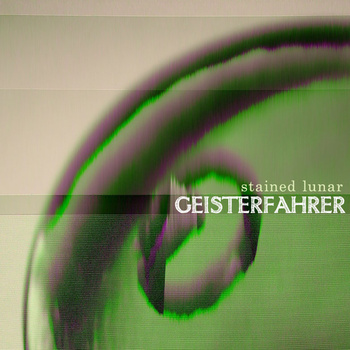 New Orleans duo, Geisterfahrer, expand their previous palate by appearing to reduce it. On Stained Lunar they still eschew computers but also use clearer production, silence, and darker lyrics. The result is a separation of instruments and voices which better emphasize an ethno-catatonic, hypnotic, pagan sensibility.
New Orleans duo, Geisterfahrer, expand their previous palate by appearing to reduce it. On Stained Lunar they still eschew computers but also use clearer production, silence, and darker lyrics. The result is a separation of instruments and voices which better emphasize an ethno-catatonic, hypnotic, pagan sensibility.
 
Geisterfahrer’s 2009 release Telegraph was hailed by Backporch Revolution as arguably the label’s most beautiful release, ever. That claim was worthy, although it overlooked the fine Moog Modulations EP by Electrical Spectacle. It also introduced a hilarious criteria considering that the label is responsible for unleashing the prolific, spontaneous, sonic gambles of Potpie, not to mention the essentially unlistenable, noise-spoof, tourist-trap, art-terrorism of Uptown Cajun Allstars.
In any event, Stained Lunar easily surpasses the pleasing but perhaps too densely-packed drone, thud and wail of Telegraph and gives a glimpse of the potential of Geisterfahrer. The two members, B. Aubrey and Shae Freeman, use accordion, acoustic guitar, autoharp, banjo, bombard, bs202, bulbul tarang, cello, clarinet, concert bass, conch, dilruba, drums, electric bass & guitar, mouth bow, ocean harp, percussion, saw, singing bowls, shenai, ukelin, viola, and voices. The alternating innocent and creepy voices added to my enjoyment. Some of this album is dark, mystical, space-folk which sounds like lost excerpts from the Wicker Man soundtrack. Geisterfahrer have ditched the more predictable aspects of their music in favor of delicate instrumental passages and less ambiguous vocals. Their music is now less-cluttered, more coherent and, at times, verging on the song-like.
The whole album can be heard at the label website.
Read More
 As most listeners turn to low-quality downloads, online streaming, iPod earbuds, and cheap computer speakers, a handful of record labels seem to truly care about the sound quality of their new releases. Kranky is a label that cares, and A Winged Victory for the Sullen, in particular, lives up to its legend. Adam Wiltzie and Dustin O'Halloran recorded the album primarily in Berlin on a couple incredibly fancy, 9-foot grand pianos in large acoustic spaces; added strings and horns; mixed the record in a 17th century villa in Italy; and processed the songs all analogue, straight to magnetic tape. It sounds incredible.
As most listeners turn to low-quality downloads, online streaming, iPod earbuds, and cheap computer speakers, a handful of record labels seem to truly care about the sound quality of their new releases. Kranky is a label that cares, and A Winged Victory for the Sullen, in particular, lives up to its legend. Adam Wiltzie and Dustin O'Halloran recorded the album primarily in Berlin on a couple incredibly fancy, 9-foot grand pianos in large acoustic spaces; added strings and horns; mixed the record in a 17th century villa in Italy; and processed the songs all analogue, straight to magnetic tape. It sounds incredible.
- Administrator
- Albums and Singles
 As most listeners turn to low-quality downloads, online streaming, iPod earbuds, and cheap computer speakers, a handful of record labels seem to truly care about the sound quality of their new releases. Kranky is a label that cares, and A Winged Victory for the Sullen, in particular, lives up to its legend. Adam Wiltzie and Dustin O'Halloran recorded the album primarily in Berlin on a couple incredibly fancy, 9-foot grand pianos in large acoustic spaces; added strings and horns; mixed the record in a 17th century villa in Italy; and processed the songs all analogue, straight to magnetic tape. It sounds incredible.
As most listeners turn to low-quality downloads, online streaming, iPod earbuds, and cheap computer speakers, a handful of record labels seem to truly care about the sound quality of their new releases. Kranky is a label that cares, and A Winged Victory for the Sullen, in particular, lives up to its legend. Adam Wiltzie and Dustin O'Halloran recorded the album primarily in Berlin on a couple incredibly fancy, 9-foot grand pianos in large acoustic spaces; added strings and horns; mixed the record in a 17th century villa in Italy; and processed the songs all analogue, straight to magnetic tape. It sounds incredible.
Back in 2008, on the heels of Stars of the Lid's masterwork, And Their Refinement of the Decline, my wife and I saw Adam Wiltzie and Brian McBride in concert in their hometown of Austin. The guys played at the Alamo Drafthouse Cinema, a beloved (and slightly bizarre) movie theater that serves microbrews and a full dinner menu to accompany classic and contemporary films, horror and sci-fi film festivals, quote-alongs, sing-alongs, and the inimitable Air Sex World Championships.
At first, I was unsure the booking was a good fit for Stars of the Lid's hushed, drifting music. When the show commenced, though, it was obvious the Drafthouse was chosen for at least two reasons. First, its acoustics: the Stars' lush, ambient dream/drone-scapes are nothing if not epic, widescreen, cinematic—in other words, a natural fit for a theater setting. Second, its visuals: regular collaborator Luke Savisky provided a variety of abstract projections that complemented the music for those who stayed awake.
All of which is to say that Adam Wiltzie has learned a thing or two from playing in cinematic settings. His newest project, a collaborative effort with American pianist and composer Dustin O'Halloran, is like hearing Stars of the Lid in Dolby Digital 5.1 surround sound. It plays as a magnificent, fully realized album, in the same way that fellow Stars member Brian McBride let loose his creative reins on The Effective Disconnect last year. Both projects are a step back from the more austere, immersive nature of And Their Refinement of the Decline—though A Winged Victory for the Sullen seems less definitive by contrast, the trade-off is in its brevity, melodicism and accessibility.
The natural parallel to A Winged Victory is Wiltzie's other major work without McBride—2004's The Dead Texan, a collaborative album and visual project with filmmaker Christina Vantzou. In hindsight, Wiltzie's work under that title seems unfocused—sure, it utilizes a diverse palette of strings, piano, and thick smears of ambient guitar, but it never quite captures a sound the way Stars of the Lid often do. With that project, he had Vantzou—a visual artist, not a musician—as his collaborator, and her influence on the music seemed unclear. By contrast, O'Halloran provides a great deal of structure to A Winged Victory; his piano reflects off Wiltzie's sighing drones the same way the moon's glow reflects off the ground after a light rain. O'Halloran's modern classical playing provides melody and structure, a fresh counterpoint to Wiltzie's recognizable style.
There are other guests, and instruments, that accent the record. Notably, Icelandic cellist Hildur Gudnadottir and violinist Peter Broderick both contribute, adding a plaintive coda to "Steep Hills of Vicodin Tears," and orchestral flourishes here and there. (O'Halloran, Broderick and Wiltzie also collaborated on O'Halloran's solo album, Lumiere, released earlier this year on Max Richter's 130701 imprint—well worth seeking out.) Mostly, A Winged Victory belongs to Wiltzie and O'Halloran, though; it is their baby. Wiltzie's deep washes of blurred guitar drone and O'Halloran's restrained, resonant piano are emotive, breathtaking, beautiful and moving—like Wiltzie's strongest work in Stars of the Lid.
Perhaps my favorite thing about A Winged Victory for the Sullen, though, is that I haven't found a better album all year to listen to in a quiet, reflective state, with a glass of red wine, using a quality pair of headphones. The only other album that comes close this year is Tim Hecker's phenomenal Ravedeath, 1972, also released on—surprise!—Kranky.
Samples:
Read More
- Administrator
- Albums and Singles
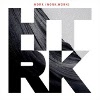 The Hate Rock Trio have resurfaced, following an unthinkable tragedy, to present a new full-length album which will undoubtedly be met with a degree of disagreement amongst listeners. The group, now a duo, has strengthened their sound technique, creating a listening experience undeniably original, challenging, and captivating; however, the absence of the riffs—which were an integral part of Marry Me Tonight—is noticeable and sorely missed.
The Hate Rock Trio have resurfaced, following an unthinkable tragedy, to present a new full-length album which will undoubtedly be met with a degree of disagreement amongst listeners. The group, now a duo, has strengthened their sound technique, creating a listening experience undeniably original, challenging, and captivating; however, the absence of the riffs—which were an integral part of Marry Me Tonight—is noticeable and sorely missed.
The teaser song, "Eat Yr Heart," released as a free MP3 over this past summer, is a perfect indicator of how the album plays out. It's a cold, dark, and sterile place, almost completely void of life, exploiting the 808 drum machine and soaking that and the androgynous vocals deep in effects. The underlying mood is undeniably heavy, and at extremely loud volumes the album as a whole is a powerful lush audio bath. What's absent, however, is the almighty hook, an element so difficult to describe by most people, but a crucial component, and this prevents the album from being great.
Marry Me Tonight opened with a pounding pulsing rhythm and bass guitar driven sexual anthem, followed by the phenomenal "Rentboy," which was so captivating that it commanded attention for the rest of the album, and the following songs managed to sustain that excitement, without fail. Work (work, work), on the other hand, opens with a stark, tunefully absent, and almost completely uninteresting porn advertisement sounding bit in German, leaving very little reason to continue listening, and the payoff doesn't ever quite happen. The following song "Slo Glo," is the reintroduction of Johnnie's vocals to the mix, and while it's decent, it's a very sad and slow affair. It's hardly what the album needs at the launch. As the album continues through the other songs, the hooks that drove the last album are gone. Without the important captivating tunes, to me, this album seems unfinished.
It isn't until the last song of the first virtual side of this 10 song album, "Skinny," where there's a seemingly prevalent melody backing the vocals, but it and the melody from the following "Synthetic" remain stagnant and uninviting, to me, at least.The musical accompaniments to the rhythm and vocals are clearly more present on the second half of the album, but with the exception of the beautifully melancholic "Love Triangle," nearly all fall short of resonating strongly with me. In all fairness, this stark approach may work for other people—I have heard others reactions to the albums, and some people whose opinions I trust actually enjoy this approach quite a bit—but I want more, and I know the band is capable of creating more.
I haven't given up on HTRK yet, and perhaps some of the songs on Work (work, work) will grow on me more in due time, but there's a few too many low spots on this album and not enough strong points to get me to that place any time soon.
samples:
Read More
- Administrator
- Albums and Singles

While many, myself included, tend to think of New York’s Controlled Bleeding based on their harsh noise period in the mid 1980s, they always had a more multifaceted sound, and more recent works, such as Odes to Bubbler, have embraced more of a free jazz influenced rock sound. Paul Lemos and company do that genre quite well on here, though many CB fans may already own the bulk of this record.
Other than the first six tracks on here (and two uncredited bonus songs), this material was on the Vinyl-on-Demand Songs From a Sewer of Dreams LP box set, and also the first disc of the Gibbering Canker-Opera Slaves CD set.If you're an owner of either of those, such as myself, think of this as an expensive EP.
"Chum Grubber" and "Controlled Bleeding" reminded me of some of Naked City's best material, in that it puts just the right amount of ramshackle noise into a traditional rock framework, both tracks reaching out into harsh, noisy waters but being reigned back in at just the right time.On "Eye of Needle" and "Shards Blown Back," the band embrace more of a post-rock sensibility, relying less on instrumental freakouts and more on textural explorations, making for two very captivating songs.
The remaining material, which is previously released, takes its cues from the band’s long and varied discography.There's more of the jazz influenced noise freakouts, such as the four part "Bees," which nicely juxtaposes noise, jazz, and grindcore throughout, and "Spattered In the Key of "O"," featuring Weasel Walter on drums, treads similar waters, adding in some squawking horns to the machine gun rhythm fest.
"A Love Song (In Two Parts)" shows a bit of the band's playful side:for the first third it's a prog rock synth kaleidoscope of sound, but launches violently into a wall of harsh digital noise that harkens back to their earlier days, before closing out on a somewhat random (and goofy) piano and guitar ending."An Announcement," which is slightly different on here than the other places it appears, is a cute little track of the band if it was lead by a little girl.
The first of the two unlisted tracks grabbed me, with its slow building structure and dubby, Krautrock inspired rhythms that are equal parts Tago Mago and Metal Box, a combination that can’t go wrong in my opinion.It sounds as if it might have been recorded specifically for this disc, but I can't say for sure.
Other than the redundancy of this material when compared to the aforementioned box sets, Odes to Bubbler is a strong, if not completely coherent, album.While it jumps back and forth stylistically, pretty much everything Lemos and cohorts choose do, they do well.There are bits that do nothing for me (the jazzy scat vocals that pop up aren't my thing), but the whole package works well.Those who pine for the days of pure harsh noise will probably not be overly interested, but for me, it’s the right level of eccentric.
samples:
 
Read More
- Administrator
- Albums and Singles
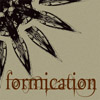
Inhabiting a murky, future-primitive electronic world akin to some of Coil's best work, Formication blends opaque ambient passages with mutated, unnatural rhythms that carefully straddle the line between formless chaos and repetitive, occasionally almost danceable beats.
It's on tracks like "Solus Air & the Dream of the Heart Star" where the two structural opposites blend together perfectly, with amorphous ambient passages interspersed with erratic, but catchy distorted beats.The chanting voices and disorienting electronics convey a ritualistic feeling throughout.
"Slow Man – Personal Insults" falls more into the world of chaos, with disembodied voices and sputtering rhythmic elements careening together in a dense, heavy mix that has a sense of tension that’s almost tangible.The effect is even more pronounced in its sequencing next to "The Girls Spun Round in Fear," which is far more sparse and arid, even if it does have the sensibilities of an updated Blade Runner soundtrack. While it's not light in the conventional sense, it at least allots some breathing room.
I was most entranced by the pieces that fell more into the world of conventional electronics.The solid, pummeling techno beats of "Silver" are part of a track that is structurally pretty simple, but with an array of sounds that make it more captivating than it would seem on the surface.In a similar way, the fractured take on the Chain Reaction type sound that closes the album on "Absolute Will" makes for a great ending:it might not do anything out of the ordinary, but what it does, it does quite well.
While there are a couple tracks, like "I Had a Plastic Head that Melted" and "Dr. Umens May Care," that aren't all that memorable, the bulk of this album is a fresh take on electronic music that varies between dark drone worlds and dance floor oriented beats, two genres that are rarely paired together.
Early copies are packed with an additional CD-R remix EP that features Hoor-paar-Kraat stretching "Argentum" out into creepy space, Locrian making "This is Normal for Me" even more bleak than the version that opens the main album, and Formication themselves contributing "I Dare You," a beat oriented track that is great on its own, but would have been out of place on the main album.It's worth the few extra bucks for the remixes, that’s for sure.
samples:
- Solus Air & the Dream of the Heart Star
- Nightly Instructions from the Cracked Telephone
- The Girls Spun Round in Fear
 
Read More
- Administrator
- Albums and Singles
 While his name may be most closely associated with the No Fun Fest he curates and the abrasive noise that is usually featured there, Giffoni’s own work tends to focus less on the harsh and more on the minimal electronics. On this album, he continues his focus on rudimentary analog electronics in a highly structured set of works that is arguably TOO structured.
While his name may be most closely associated with the No Fun Fest he curates and the abrasive noise that is usually featured there, Giffoni’s own work tends to focus less on the harsh and more on the minimal electronics. On this album, he continues his focus on rudimentary analog electronics in a highly structured set of works that is arguably TOO structured.
The five pieces that make up this album all range around nine minutes, with the final, longer track clocking in at a bit over 12. Considering the ridgid structure each track is built on, the individual tracks tend to follow similar blueprints that unfortunately don’t vary too much from piece to piece. Opening track "The Endless Mirror" starts with a rattling set of synth notes that eventually lock into some sense of rhythm as lower pitched notes kick in. As the layers begin to pile on, the early rhythm almost becomes a traditional 4/4 kick drum as rougher square wave frequencies pierce through the mix. In essence, it feels like the soundtrack to a primitive Atari video game.
"A Son With No Father" similarly starts out with an odd electronic warbling chime that repeats, building a sense of rhythm as radio static enters the mix, giving the track an extremely textural feel. Even once the slicing white noise elements come in, it remains a restrained and cautious piece as opposed to an overly chaotic one. "This Is How You Pull The Trigger" opens with a pulsating old school analog synth that could have been lifted from any techno track, but the synthetic spaceship sounds and highly controlled noise parts keep it more in the abstract realm of sound, especially as it eventually transitions into harsher noise work.
"Comfort and Pleasure," however, shows the shortcomings of the disc. The repeated engine revving synths and phased noises call to mind the early days of power electronics, which is only increased by the rumbling bass sequences. While it is an interesting listen, it also feels about five minutes too long. All of the tracks follow this similar pattern of a stripped down introduction that slowly builds and builds in complexity before breaking back down to the introductory sounds.
The plus of this is that the mixing allows one to pay closer attention to the electronic textures that make up the songs that stay fundamentally raw: there’s not a great deal of effects or other processing going on here. The problem is that structurally the tracks all feel too similar and that leads them to being a bit too predictable. While I’m not saying it has to break into pure noise and end up in total chaos, it just feels too formulaic. Overall it’s a good album, but just a bit bland compared to what it could have been.
samples:
Read More
- Administrator
- Albums and Singles
 Returning with their second full length, the East Coast Portland (Maine) foursome manage to not only defend their reputation as capable purveyors of riffs most heavy but also to expand their sonic palette in an unexpected but welcome way. With greater control of dynamics, a female guest vocalist and songs played across time scales better expressed in geologic terms rather than minutes, this is one of the best metal albums of the year.
Returning with their second full length, the East Coast Portland (Maine) foursome manage to not only defend their reputation as capable purveyors of riffs most heavy but also to expand their sonic palette in an unexpected but welcome way. With greater control of dynamics, a female guest vocalist and songs played across time scales better expressed in geologic terms rather than minutes, this is one of the best metal albums of the year.
With a crashing thud, Ocean start where they left off on their debut: doom played at a snail’s pace. While it is no great departure for them, it is still an awesome sound that sucks the listener in from the moment it starts. However, another album in the exact same style would be tedious considering the wealth of bands exploring similar musical areas (Moss, Trees, Wreck of the Hesperus, and so on and so on). Ocean avoid stagnation by actively breaking up their already tried and tested sound. Halfway through “The Beacon,” the volume drops out and the sound shifts significantly. Rolling back on the distortion and introducing a female vocalist (Yoshiko Ohara from Bloody Panda), the change in mood is remarkable. Over the second half of this immense song, the power builds up again before burning out exquisitely.
“The Beacon” could have been an album on its own but Ocean have spoilt us by adding another shorter piece to flesh out the album (although at 23 minutes it is still a bruiser!). “Of the Lesser” again returns to the over- amplified plod of Ocean of yore. At first disappointing after the majesty of “The Beacon” but as the piece progressed, an almost ecstatic feeling Godspeed-like momentum builds up before slowing right down again; it is dizzying stuff.
With each subsequent listen of the album I get more and more enthused about the whole thing. Ocean could have very easily just repeated Here Where Nothing Grows but they have pushed themselves further than that. It will be interesting to see where they will go from here, personally further exploration of the quieter sound they have employed here on “The Beacon” would be intriguing. It is here that Ocean have gone from a group that I have liked and would listen to occasionally to a group that I feel have real potential to break apart from their peers.
As a closing remark I would wager that as nice as the 2xLP version is likely to be (Important did a wonderful job on the first album), with the length of the two songs the CD version is probably going to give the best listening experience.
samples:
Read More
- Administrator
- Albums and Singles
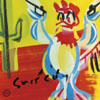 There are just about enough thrills on this debut EP to ward off the nagging boredom of another guitar group traversing a well worn musical terrain. In this case: that which might be termed "surf-gaze."
There are just about enough thrills on this debut EP to ward off the nagging boredom of another guitar group traversing a well worn musical terrain. In this case: that which might be termed "surf-gaze."
Surf City kicks off in very promising fashion with "Headin’ Inside" which has a near-perfect ratio of propulsion, yelling, frantic rhythm, gliding melody and scratchy discord. The running time of 2:27 would also have been super jukebox friendly back in the days when, well, you know. "Records of a Flagpole Skater" has plenty of guitar fuzz, thumping energy, and a vocal afterglow suggestive of sounds launched in Paisley by the Reid brothers.
By contrast "Dickshaker’s Union" seems rather desperate and lifeless (no pun intended) and "Canned Food" sounds like half a song, as ordinary and uninspiring as the title suggests. The EP does well to recover from this lumpen phase and sure enough a livelier spirit returns. Surf City's charm lies in going for the throat while not pretending to be a radical departure. For example, during "Headin’ Inside" the unpretentious cries of "1-2-3-4" have a joyous abandon with no discernable irony or sense of embarrassment. Similarly, on “Mt Kill” the line “Shake, rattle, and roll your hands” sounds just fine whether or not it’s sung with tongue in cheek. One of the better pieces here “Mt Kill” begins with a guitar figure that might have been cribbed from The Church before mutating into a dynamic guitar tone and sense of rushing vocals often associated with prime Sonic Youth. There’s no let down on final song “Free The City,” either, with obvious echoes of The Cure.
Surf City orginated in New Zealand but I think I'll resist the urge to lazily mention any NZ bands. Better to contend that, on the one hand the four best tracks on the EP are just about perfect. On the other hand, the narrow focus runs the risk of what I like to call Giovanni di Varrazzano Syndrome. Adam Nicolson, in his book On Foot, describes di Varrazzona as an Italian navigator who in the 1520s found the sliver of barrier island which includes Hatteras, North Carolina. Just as may still be the case, mainland USA was beneath the horizon, not visible from Hatteras. According to Nicolson, di Varrazzano assumed he had found all there was to America.
samples
Read More
- Administrator
- Albums and Singles
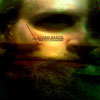 Between his Nadja albums and his solo material, Aidan Baker releases enough music to frustrate all but the most ardent and obsessive collectors. Important Records have just released a two-CD compilation that won't solve that problem, but it features some of the best Baker material I've yet heard.
Between his Nadja albums and his solo material, Aidan Baker releases enough music to frustrate all but the most ardent and obsessive collectors. Important Records have just released a two-CD compilation that won't solve that problem, but it features some of the best Baker material I've yet heard.
Important
With so much music released in the last eight years, it's not hard to imagine Baker having a diverse amount of rare songs in need of greater exposure. I Wish Too, To Be Absorbed collects MP3 downloads and songs from CD-R albums that I know about only because reliable discographies of Baker's work exist online. Despite the multiplicity of styles and approaches Baker utilizes, both discs flow with a logical and pleasing continuity that suggests a proper album more than a compilation. The track selection and running order have little other rhyme or reason; both discs jump backwards and forwards in time, skipping multiple years in favor of shared aesthetics and natural progressions.
Disc one begins with Baker's first release, Element. "Element #1" serves to establish a mood and does little more than rumble and hiss in a threatening, slightly brooding manner. The tolling of deep, distant bells provides a ritualistic tone that resonates throughout much of the collection. "K" follows this mass of sound and lightens the mood considerably, exhibiting Baker's less intense tendencies. Cello and violin are featured heavily during the first half of the song and it's difficult not to imagine Baker taking some inspiration from bands like Godspeed You Black Emperor!, Labradford, or even Rachel's. In a span of five minutes, the song's theme changes from one of memory and yearning to one of suffering and uncertainty. The strings on "K" disappear and the song resolves into a mess of scraping metal and unidentifiable clatter before ending and moving naturally into "Merge." These are the only two songs on the compilation that were originally featured on the same record, Wound Culture. This release was a book/CDr combo that dealt ostensibly with erotic themes in various forms; if "Element #1" set the tone for this disc, then these two songs add just a hint of sensuality to the record. Each of the following songs, whether they be ten or 20 minutes in length, bare traces of these first three compositions. There are hints of industrial influences on some songs and on others it's hard not to hear Baker incorporating shoegaze and krautrock stylings into his work. Whatever dress the music is wearing, it's always harboring a kind of sensuousness that isn't immediately discernible in all of Baker's music, especially not in Nadja. "Speed of Thought" ends disc one with a kind of jam-piece that sounds partly improvised, but also highly structured. It's perhaps the best song on the entire compilation and it represents a side of Baker's talent with which I am entirely unfamiliar. His pseudo-ambient, pseudo-metal, pseudo-drone projects receive plenty of attention, but this post-rock amalgam of a song has me completely spellbound. Hopefully Baker hasn't abandoned this approach and will be releasing more music like it.
Disc two collects the kind of music that I think must be most associated with Baker's solo output. Each of the five songs are long, abstract pieces with highly cinematic qualities. The focus on disc two is long, rolling sounds, muddy bubbles of synthesizer noise, and slowly developing melody. Both "Melusine" and "Esken (Bonedweller)" are mostly quiet pieces that thrive on minutiae and the mysterious qualities of hazy samples. Though definitely reliant on guitar, both songs are rich with tiny details that I can't imagine an electric guitar producing: there are sputtering motor-boats slowly sinking off foggy shores, foot steps tapping down long, ageless corridors, and gelatinous washes of bass-heavy noise creeping in and out of these songs to great effect. The title track is perhaps the most bizarre of all the songs and features a number of samples and tape loops oddly familiar to my ears. I'm nearly certain that a fraction of Autechre's "VI Scose Poise" (from Confield) is utilized on "I Wish Too, To Be Absorbed." The beginning of the song is laden with cut up, completely disproportionate samples that skip, jump, and skew the ocean of underlying guitars and synthesizers that populate the majority of the track. Bird calls, percussive glass, and mumbled vocals emerge towards the end of the song, but this array of sampling is far less manic than the rhythmic jumble that got the whole thing going. The rest of disc two is a quiet, almost-ambient affair that follows the lead of "Melusine" and "Esken (Bonedweller)."
In a way, I Wish Too... serves two functions: it highlights a number of Baker's musical styles and it functions as two complete and independent records. Both discs have natural peaks and valleys and both discs present a variety of Baker's musical approaches. Though I doubt that this release was meant to serve as an introduction to Baker's solo output, it fills that role perfectly and with a lot of class. I've heard plenty of good compilations and retrospectives before, but I Wish Too... goes above and beyond because it manages not to sound like a collection or retrospective at all.
samples:
Read More


